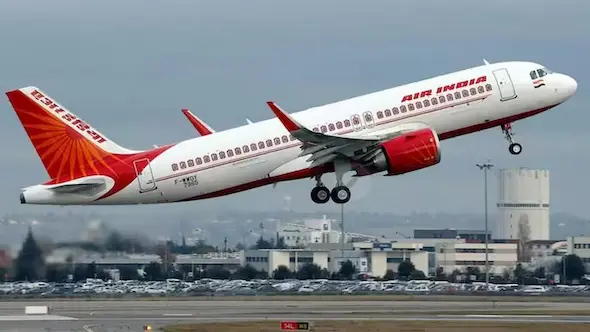
An Air India pilot collapsed just before operating Flight AI2414 from Bengaluru to Delhi, triggering a medical emergency and delaying the flight
Minutes from Takeoff: A Medical Emergency in the Cockpit
In the early hours of July 4, 2025, passengers aboard Air India Flight AI2414 from Bengaluru to Delhi faced an unexpected delay when the assigned pilot collapsed in the cockpit moments before signing off on pre-flight documentation. The incident occurred just as the pilot was preparing to accept the aircraft for operation, triggering an immediate medical response.
Table of Contents
Air India confirmed the emergency in an official statement:
“There was a medical emergency involving one of our pilots in the early hours of July 4. As a result, the pilot was unable to operate Flight AI2414 and was taken to a local hospital immediately.”
The pilot was swiftly hospitalized and is currently reported to be stable but under medical supervision. The airline arranged for a replacement pilot, and the flight eventually departed after a delay, ensuring passenger safety and compliance with operational protocols.
This incident, while resolved without harm to passengers, has raised serious concerns about crew health monitoring, especially in high-pressure environments like commercial aviation.
Fatigue and Flight Safety: A Growing Concern in Indian Aviation
The collapse of the pilot is not an isolated event. In April 2025, a 36-year-old Air India Express first officer died of cardiac arrest shortly after landing a flight in Delhi. That tragedy prompted the Directorate General of Civil Aviation (DGCA) to initiate a detailed investigation into crew fatigue, duty rosters, and medical readiness.
A pattern is emerging:
- Pilots collapsing during or after duty
- Reports of excessive flight hours
- Allegations of insufficient rest periods
- Pressure to exceed Flight Duty Time Limitations (FDTL)
A 2024 survey by the Safety Matters Foundation revealed that 70% of Indian pilots reported fatigue after flights exceeding 10 hours. Many cited irregular rosters and lack of adequate rest as major stressors.
In response, DGCA proposed reforms including:
- Increasing weekly rest from 36 to 48 hours
- Capping night duty at 10 hours
- Mandatory medical screenings for crew on long-haul routes
However, implementation has been slow, and incidents like the Bengaluru collapse underscore the urgency of these reforms.
Passenger Trust and Industry Accountability: What Comes Next?
While Air India’s swift response ensured safety, the incident has reignited public debate on aviation accountability. With India’s air traffic surging post-pandemic, airlines are under pressure to meet demand without compromising crew welfare.
Key questions now dominate the conversation:
- Are airlines prioritizing profit over pilot health?
- Should pre-flight medical checks be mandatory for all crew?
- Is the DGCA doing enough to enforce rest and duty norms?
Passengers, too, are demanding transparency. Social media reactions ranged from concern for the pilot’s health to frustration over delayed communication. Many called for real-time updates during disruptions and greater clarity on crew fitness protocols.
Air India, in its statement, emphasized its commitment to the pilot’s recovery:
“Our immediate priority is to assist the pilot and his family to ensure his speedy recovery.”
The airline also reiterated that safety remains paramount, and that all necessary steps were taken to minimize disruption.
As the aviation sector continues to expand, this incident serves as a wake-up call. Ensuring the health and readiness of those in the cockpit is not just a regulatory requirement, it’s a moral imperative.
The medical emergency aboard Flight AI2414 may have ended without tragedy, but it has exposed deeper cracks in India’s aviation safety framework. As regulators, airlines, and passengers grapple with the implications, one truth stands clear: a healthy pilot is the first step toward a safe flight.
Stay updated with the latest news on Rapido Updates. Keep yourself updated with The World, India News, Entertainment, Market, Automobile, Gadgets, Sports, and many more